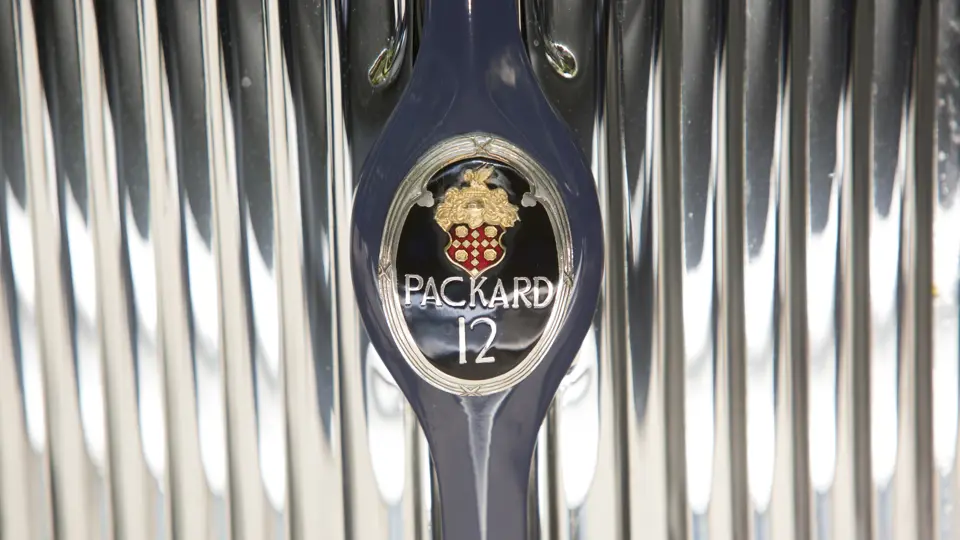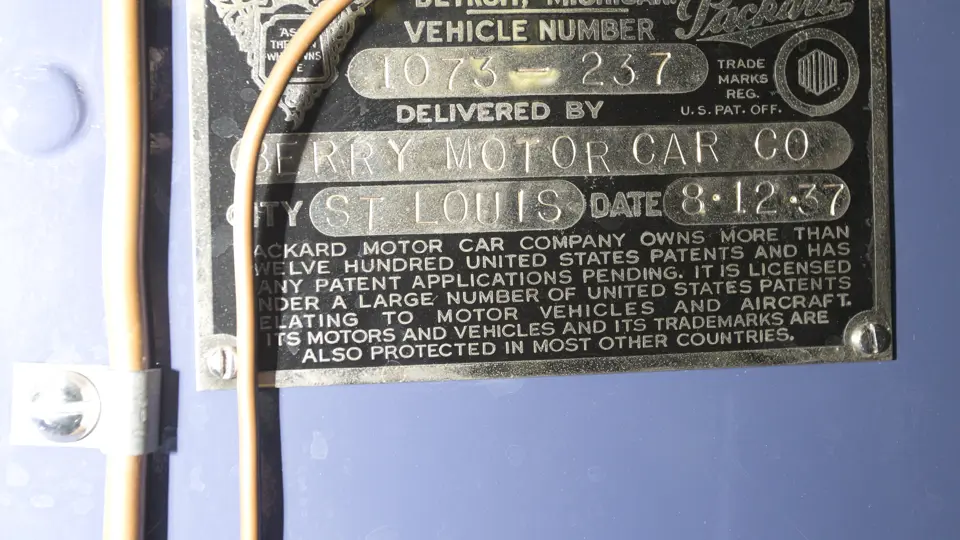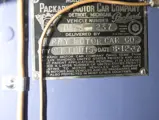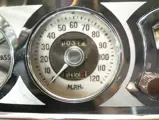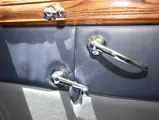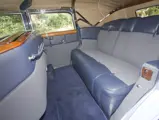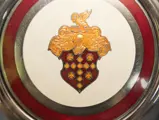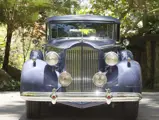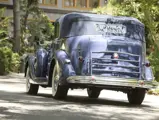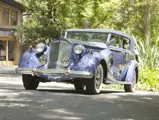Series 1508. 175 bhp, 473.3 cu. in. L-head V-12 engine, three-speed manual transmission, independent coil-spring front suspension, live rear axle with semi-elliptic leaf springs, and four-wheel power-assisted hydraulic drum brakes. Wheelbase: 144 in.
By the 1930s, the Packard Motor Car Company already possessed a wealth of experience with 12-cylinder engines. Their first, the Twin Six from 1916–1923, had become almost synonymous with the genre and was phased out in favor of the simpler and more advanced Single Eight that was introduced in 1924. While the Single Eight set new standards for smoothness and agility during the late 1920s, the rekindled multi-cylinder wars had resumed in earnest by the onset of the 1930s in Detroit. Cadillac introduced its V-16 in 1930 and its V-12 in 1931, while Auburn, Marmon, Pierce-Arrow, and even Franklin had their own 12-cylinder engines in the wings for 1932.
Resurrecting the “Twin Six” name, Packard met this new competitive threat with a completely new engine. With a large displacement V-12 design with a 67-degree cylinder-bank angle, development of this new power unit was the happy by-product of an aborted front-wheel drive development project. As released, the new Twelve initially displaced 445 cubic inches, 20 more than the old Twin Six, and developed 75 percent more power. In 1933, the model name was simplified to “Packard Twelve,” and two years later, engine displacement rose to 473 cubic inches and output accordingly climbed to 175 brake horsepower.
Overall, the Packard Twelve was a conservative car with finely tailored lines, elegant appointments, a refined chassis, and a whisper-quiet 12-cylinder engine. The all-new bodies that were introduced for 1935 offered true envelope styling, as the body, hood, fenders, and running boards were incorporated into a smooth design. In addition, increased horsepower and improvements in suspension and steering, along with improved engine mounts, provided ease of operation and dramatically improved passenger comfort.
While the 1936 models were virtually unchanged, the 15th series of 1937 brought a comprehensive series of mechanical improvements. Most notably, the introduction of “Safe-T-Flex” independent front suspension, based on the sound design of the junior One-Twenty, debuted on the “Senior” Packard models. Other improvements included the adoption of hydraulic brakes and disc-type steel wheels and the elimination of the Bijur central chassis lubrication system.
Offered here is the 1508 Convertible Sedan, which represents Packard’s largest and most expensive production-bodied offering of 1937. This Packard was acquired by its present long-time enthusiast owner from the estate of the car’s second owner. It is believed that he purchased the car in 1961, and for various reasons, he was never able to embark on a comprehensive restoration. Following its addition to the current Southern California owner’s collection, a two-year frame-off restoration commenced and was executed without regard to cost. The owner spent a great deal of time matching the interior and exterior colors of the car, choosing a striking China Blue finish with matching leather and cloth upholstery in the correct original patterns. In typical Packard fashion, the level of craftsmanship and detail to be found throughout is outstanding.
While few cars make it to the green of the Pebble Beach Concours d’Elegance once in a lifetime, this Packard has been displayed no fewer than three times, in 2000, 2003, and 2004. Its restoration has been beautifully maintained, and it still presents wonderfully, as it is ready for display at the prestigious event of its new owner’s choosing.





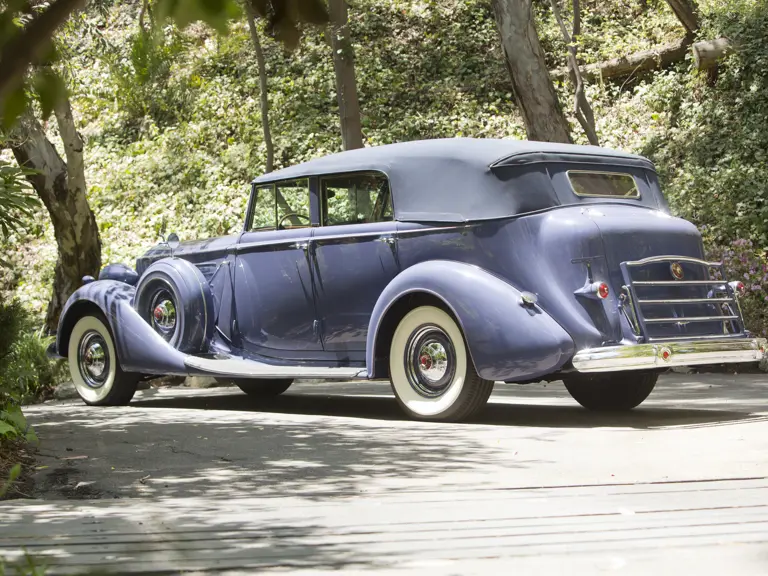
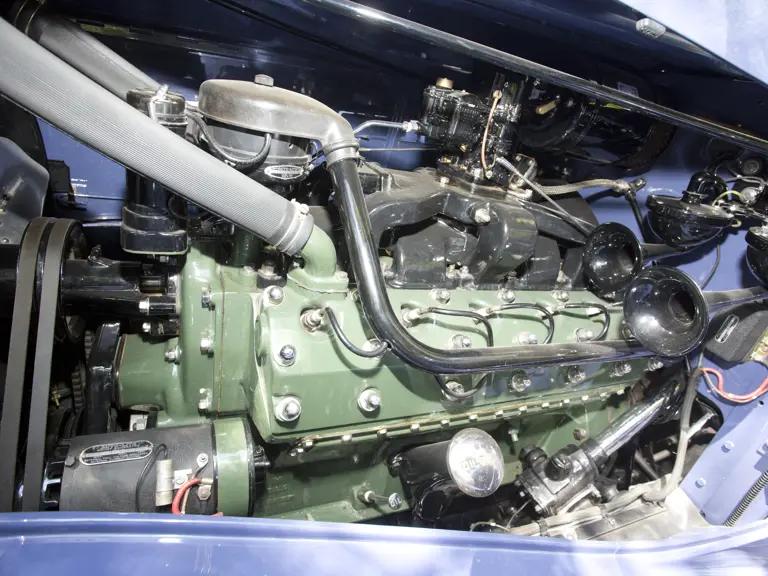
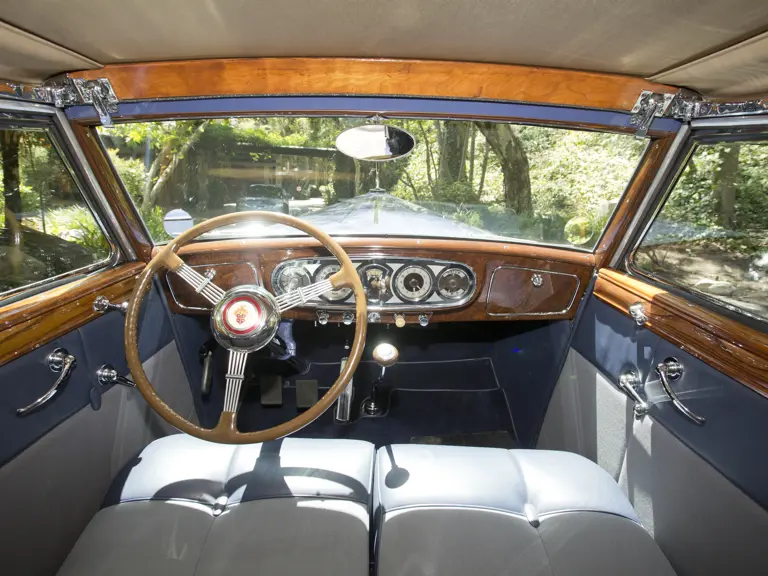
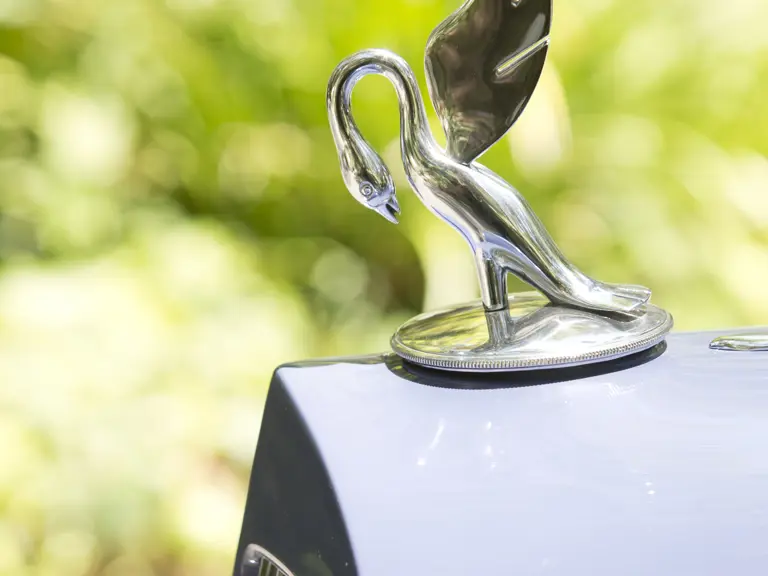
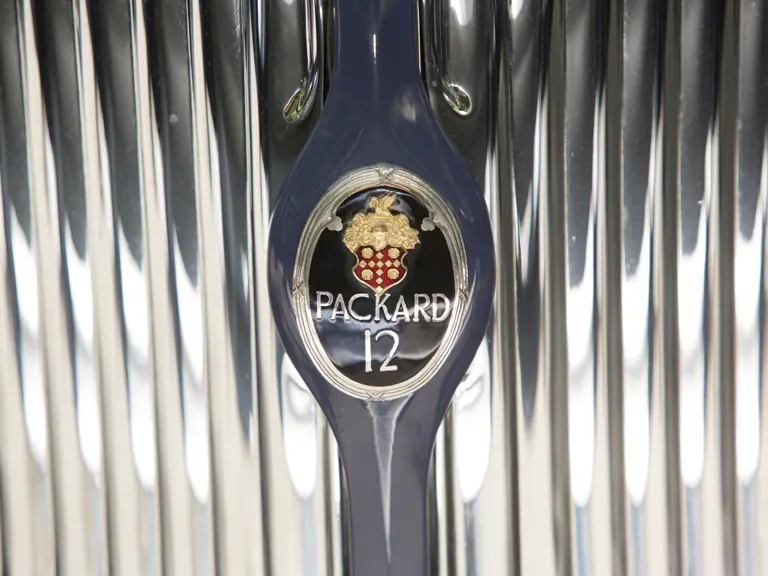
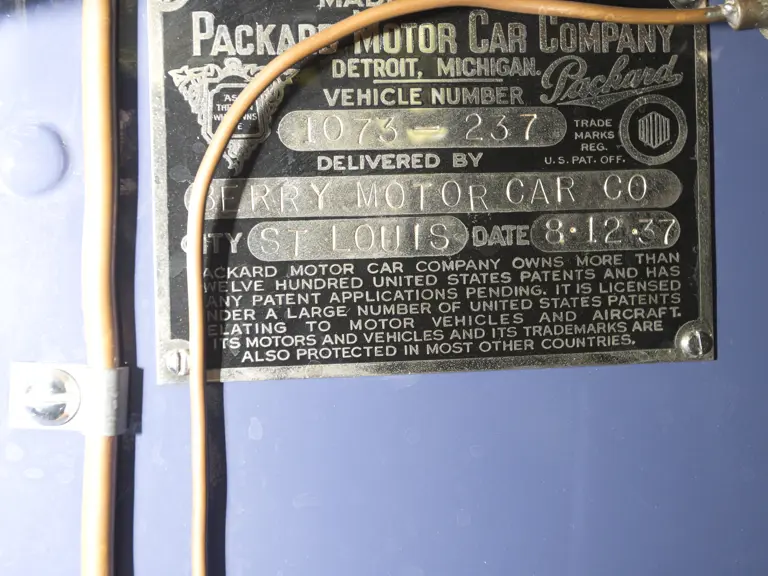

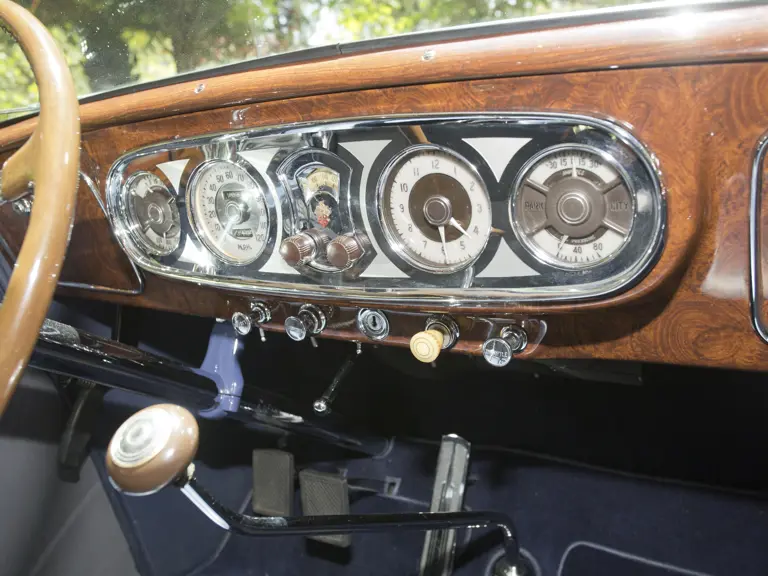
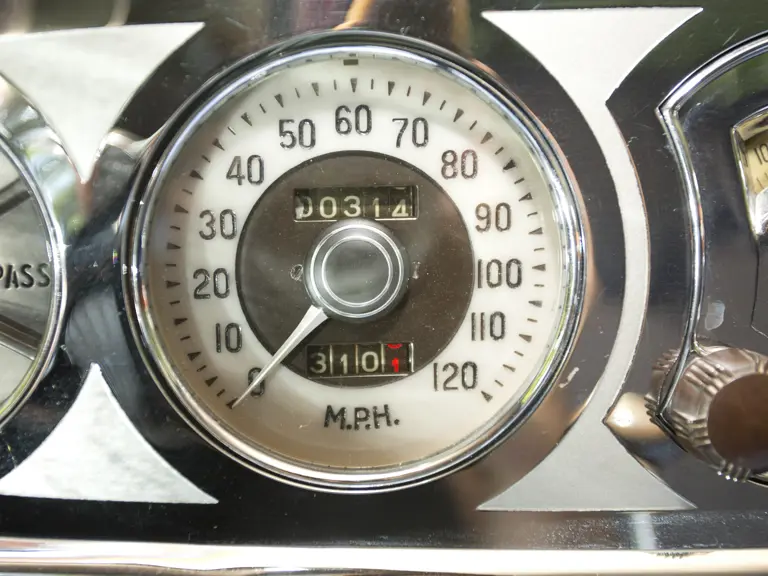

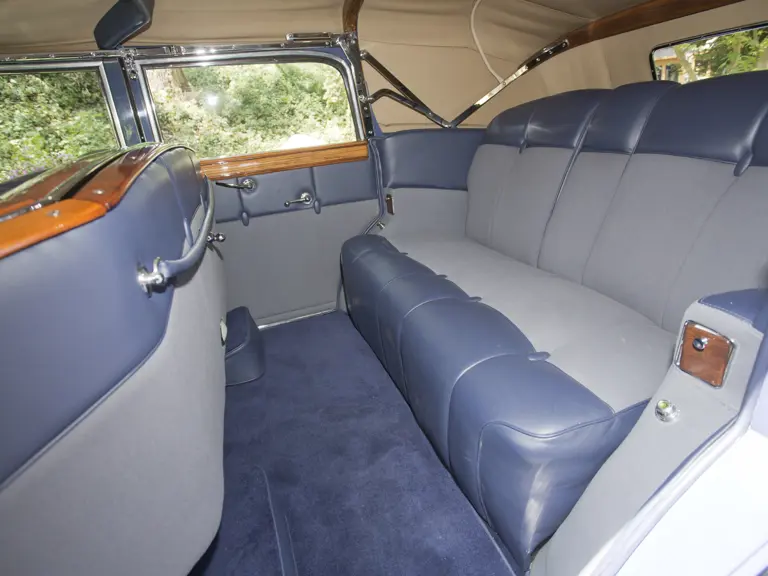
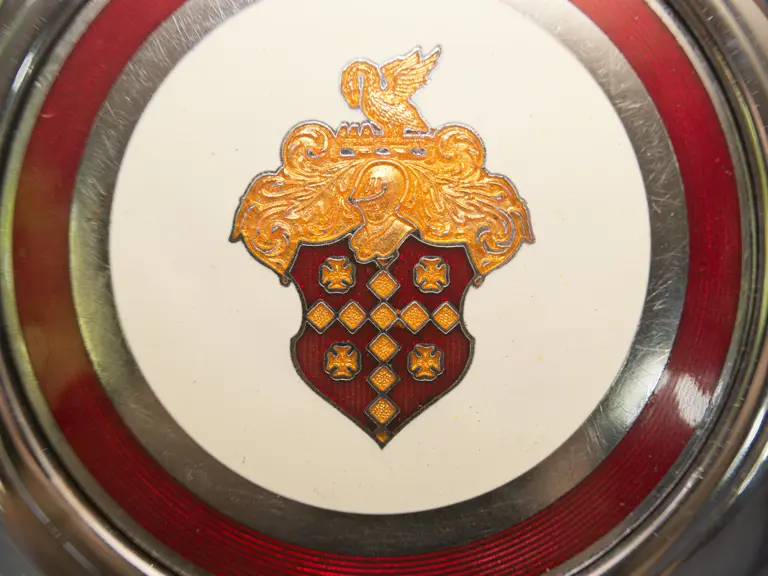

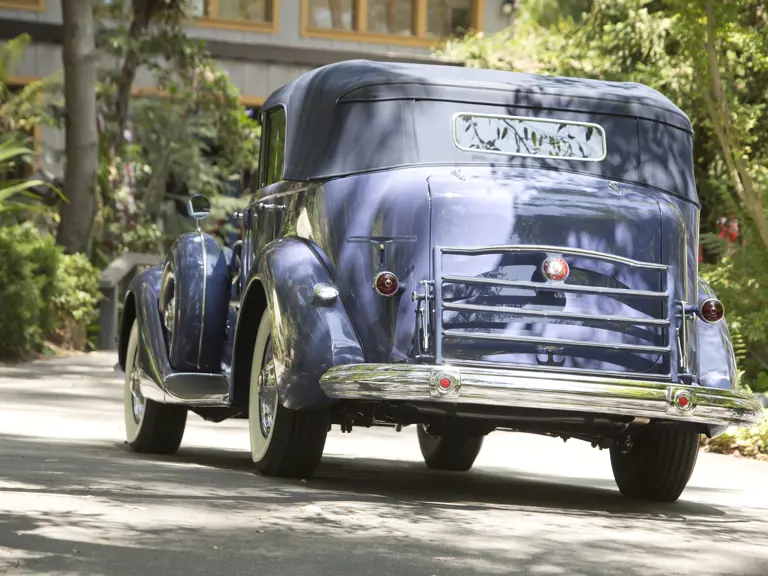
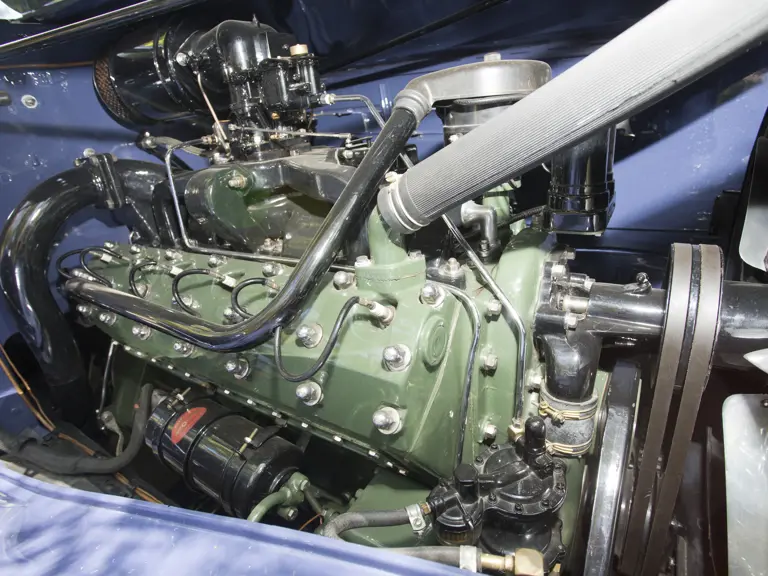
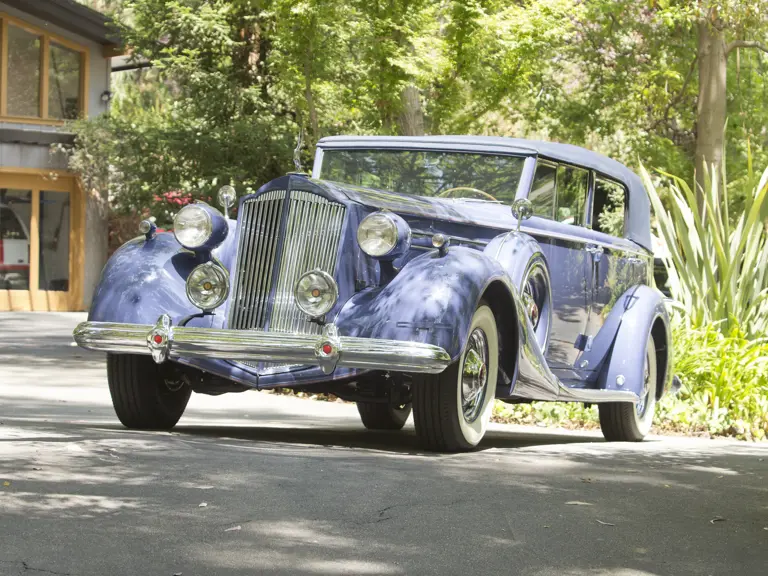
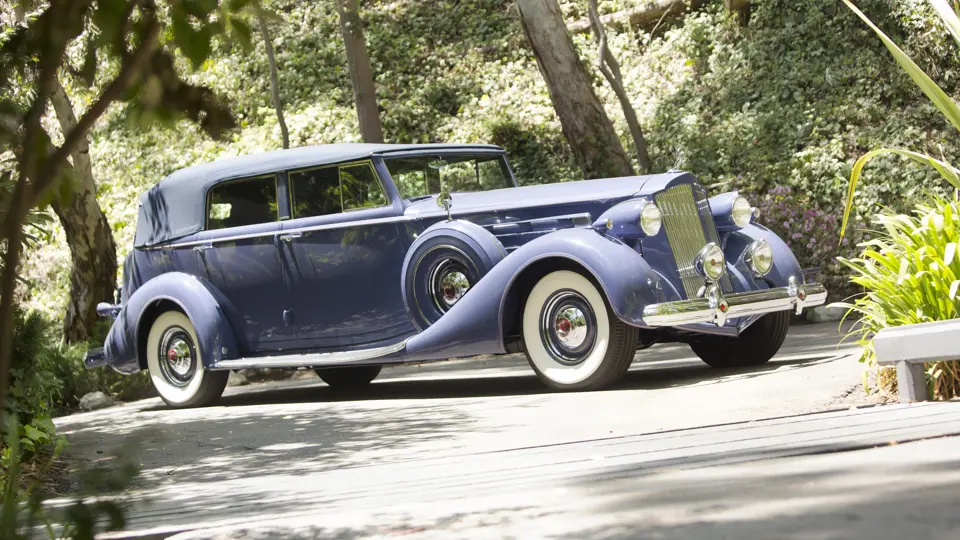
 | Monterey, California
| Monterey, California

